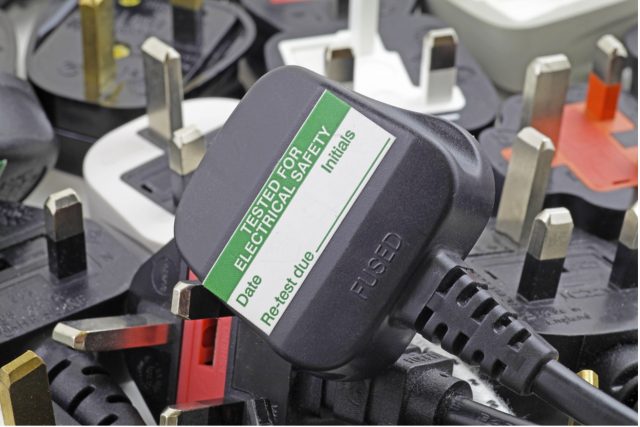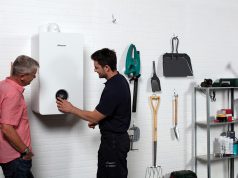
When you start a new business and buy the necessary equipment, you need to do PAT testing for all the kits. PAT testing is essential to all companies, and there is a certain period after which the testing needs to be repeated.
This blog will explore a few things about PAT testing and how it is related to your business.
What does PAT stand for?
The name “Portable Appliance Testing” is given to a sequence of electrical assessments and inspections carried out on mobile equipment to make sure that they are capable of using safely. Inspection and Testing of In-service Electrical Equipment is another name for PAT.
5 Things to know about PAT testing and your business
Here are five things that you should know about PAT testing and its relation to your business.
1. Does your company need to conduct PAT testing?
As the Health and Safety Executive (HSE) states “The law truly requires an organisation to make sure that their electrical equipment is maintained in order to prevent danger.” PAT testing is the leading technique of meeting this obligation. The obligation to grant a secure working environment is included in numerous pieces of legislation (such as the Health and Safety at Work Act, 1974) and as such, ought to be taken seriously by all employers.
The frequency of testing relies on the usage of and nature of your electrical appliances. For example, portable machines such as construction tools will warrant more regular testing than computer systems because they are regularly moved and used by many people; which increases the chance of damage to the equipment.
2. Do you need to PAT test new equipment?
When performing portable equipment testing, most people don’t bear in mind that any new objects coming into the company are also technically subject to a test.
While there isn’t any legal obligation to do so and – technically – anything that comes from a producer should work okay straight out of the box, there’s always the chance that the new portable equipment will have some sort of error. Whether it’s a power lead with reversed polarity or something vitally essential like loose wiring, these types of issues can and will be a problem with any possible piece of new equipment.
As a primary piece of advice, any new products delivered into the company should at least be subjected to a visual inspection. This includes looking at all wiring, the equipment itself and any elements for something that might be amiss.
3. What is the legal requirement for PAT testing?
PAT testing regulation requires that all landlords, employers and even self-employed people ensure that their portable electrical appliances are safe and are appropriate and used for the functions intended. These home equipment must always be maintained appropriately and stay in excellent working order.
4. Do you need an Electrician to do the tests?
Not at all, the maintenance should be done by someone competent at the testing. So, if you undertake a PAT training course, you will be able to conduct the tests on behalf of your company. There are many benefits to bringing PAT testing in-house, such as:
- Having full control over the frequency of testing.
- No additional supervision required for the tester (this can be an issue in sensitive environments such as schools)
- The tests will be conducted by someone who understands each piece of equipment, which would be beneficial if you have specialist equipment.
5. How often do you need to test your equipment?
The frequency of inspection and testing relies upon the kind of equipment and the surroundings it is used in. The only same thing is that testing must be done regularly to ensure preventative maintenance.
In order to determine how frequently you should have your appliances tested, you need to bear in mind a few distinct factors:
- Equipment that is used more need to be tested more frequently. This equipment is probably to suffer much more damage than that used less regularly.
- If people using equipment report any damages as they become noticeable, there is less risk of a major hazard. If equipment often receives damage or abuse that is not mentioned then inspections and testing are required more frequently.
- The kind of equipment in question is a principal factor in deciding PAT testing frequency. Hand-held appliances are probably to become damaged than those that are stationary.
Although there are no requirements for PAT testing frequency, there are recommendations:
- Schools – All Class 1 equipment in schools need to be PAT tested every 12 months. Class two tools should be examined every 48 months.
- Offices, Shops and Hotels – Class 1 equipment, including stationery and IT tools, must be examined every 48 months. Moveable equipment such as extension leads and transportable equipment need to be inspected every 24 months. Handheld tools need to be examined every 12 months.
- Public Use Equipment – Stationary and IT equipment such as computer systems must be examined every 12 months. Moveable, portable and handheld tools falling into Class 2 have to be inspected every 12 months. Portable and Handheld tools falling into Class 1 should be tested every six months.
- Industrial – All industrial sites, including business kitchens, must have portable and handheld tools examined every six months. Stationary, IT and moveable equipment must be tested every 12 months.
- Construction – All 110V equipment used on construction sites must be tested every three months.
Ending notes
Now, you probably have enough idea about PAT testing and some basic questions people ask about it. To know more detailed information, check out the blog “How to Carry out a PAT Test”.













